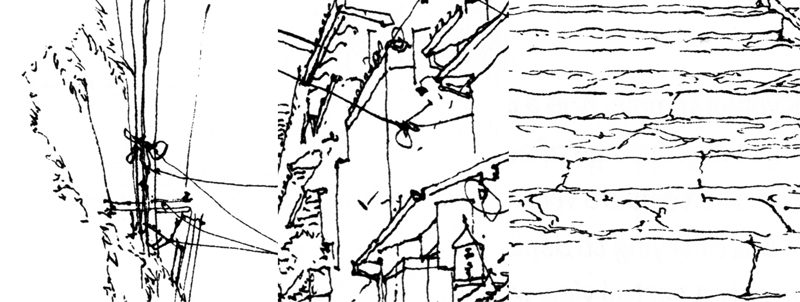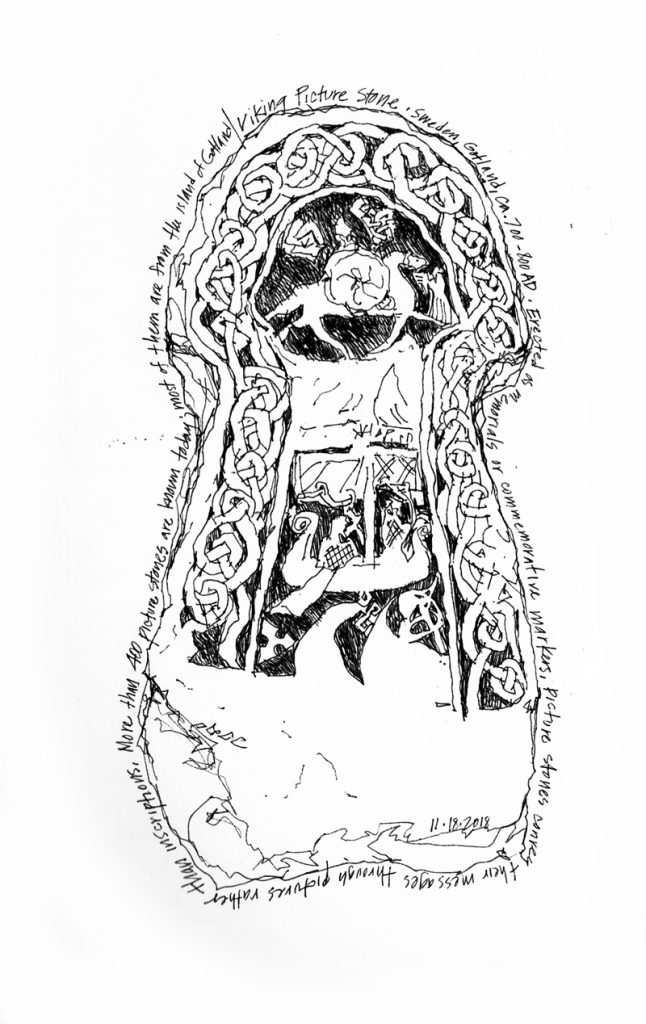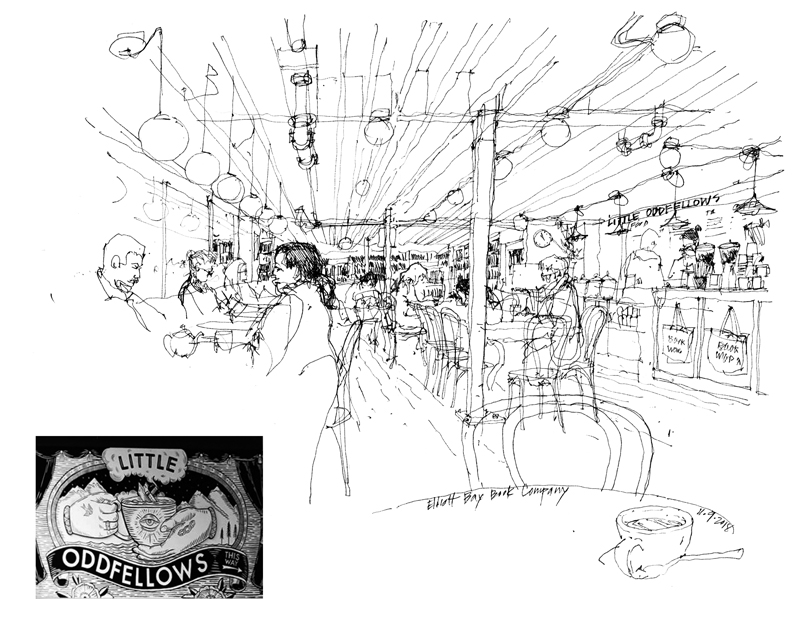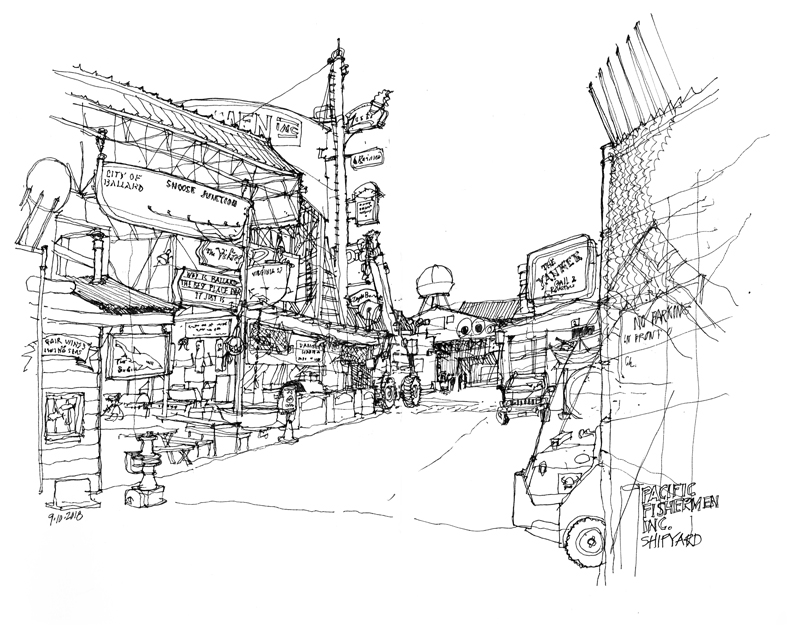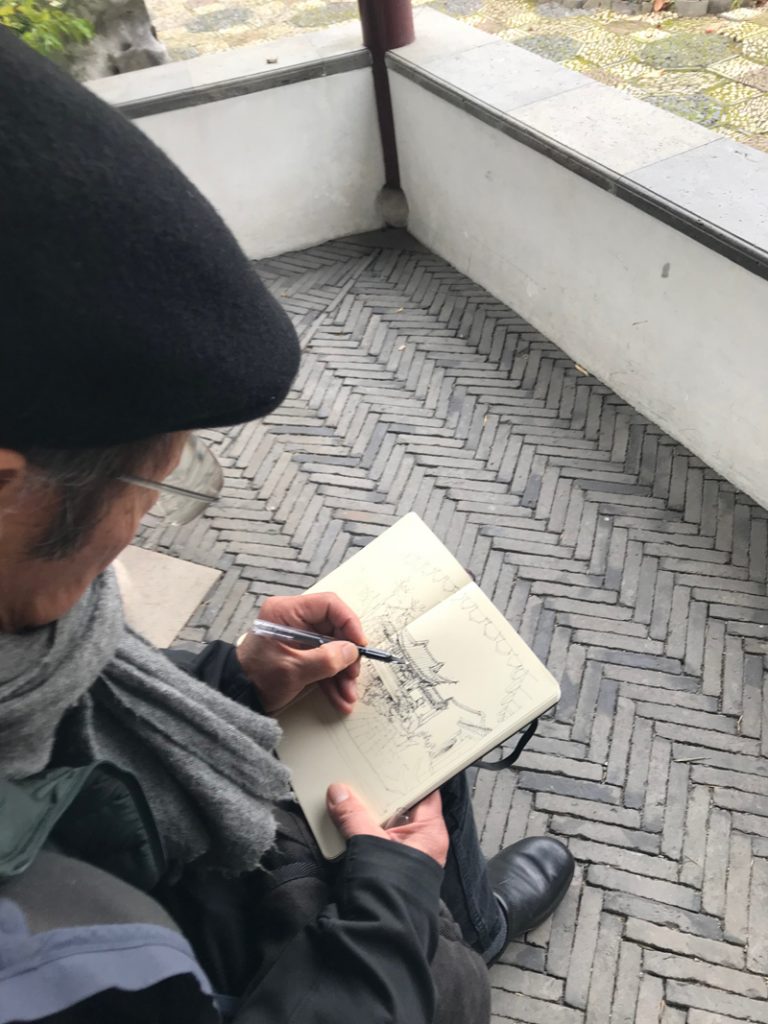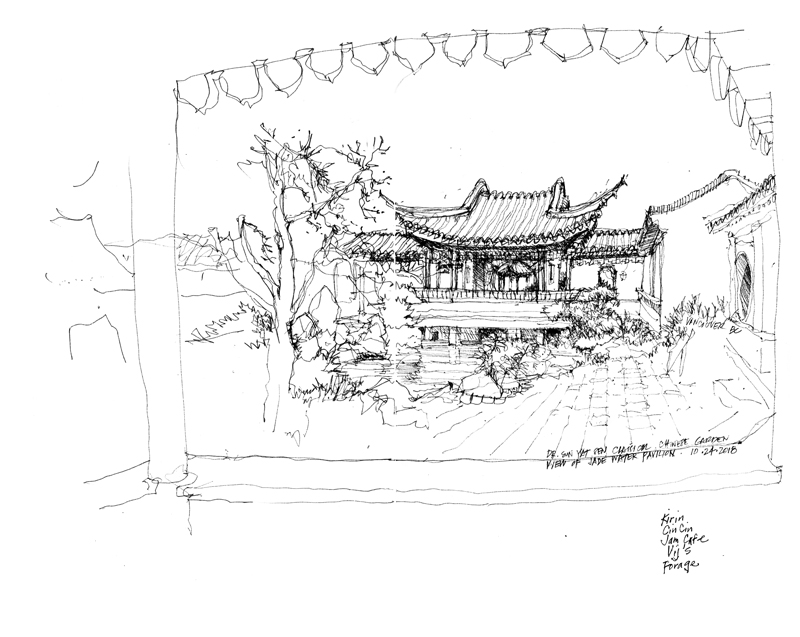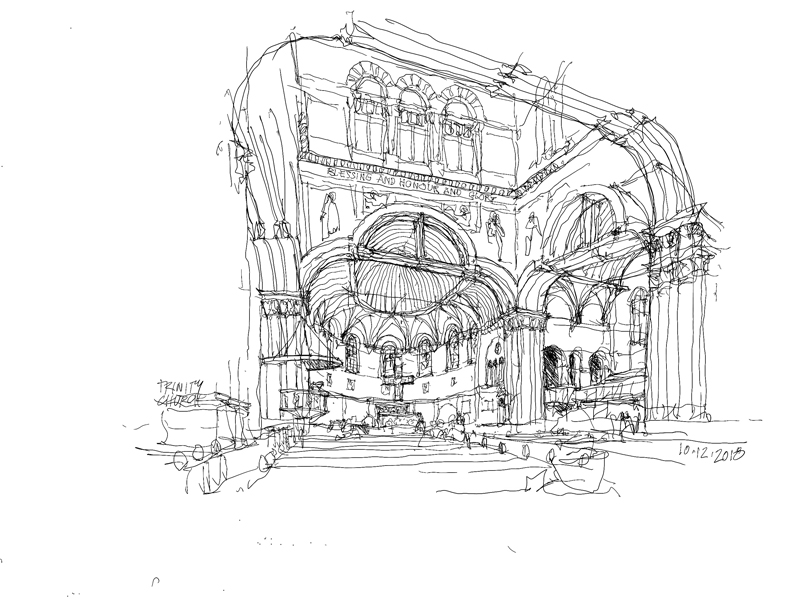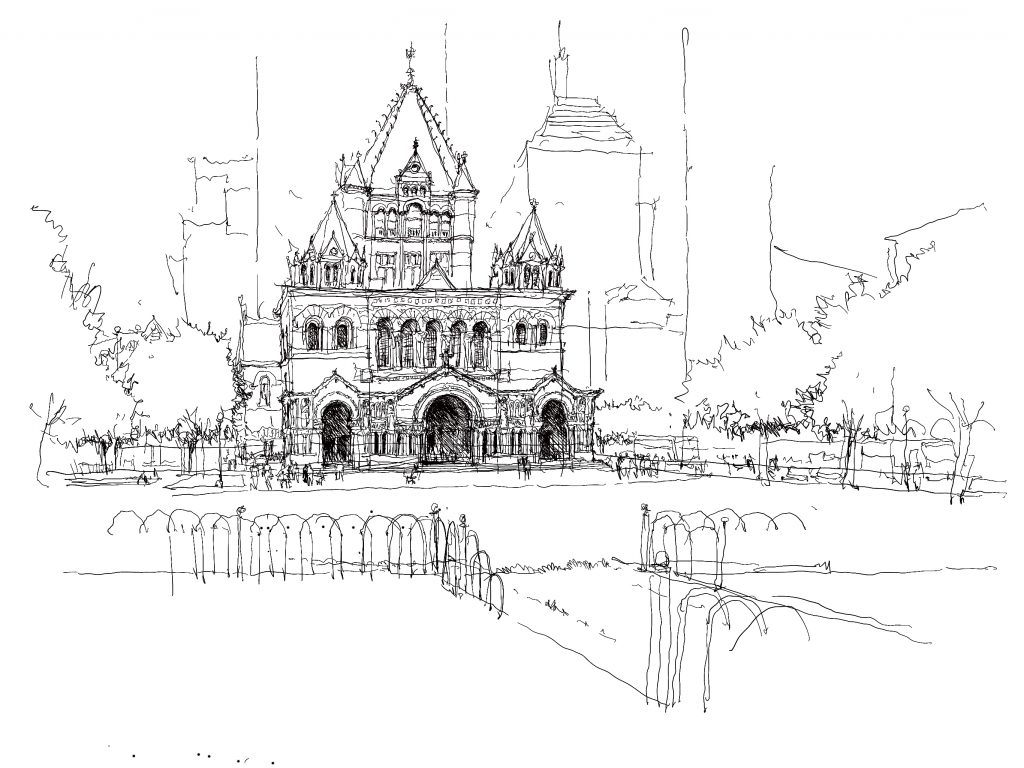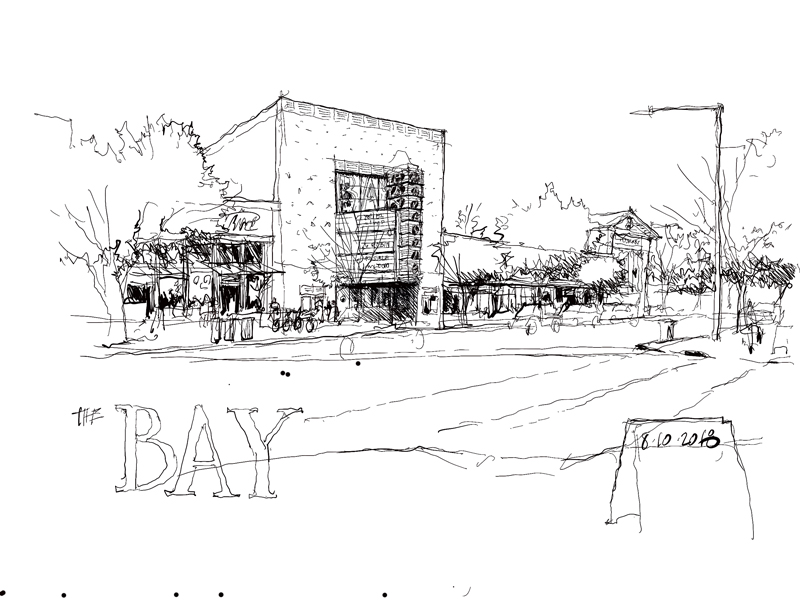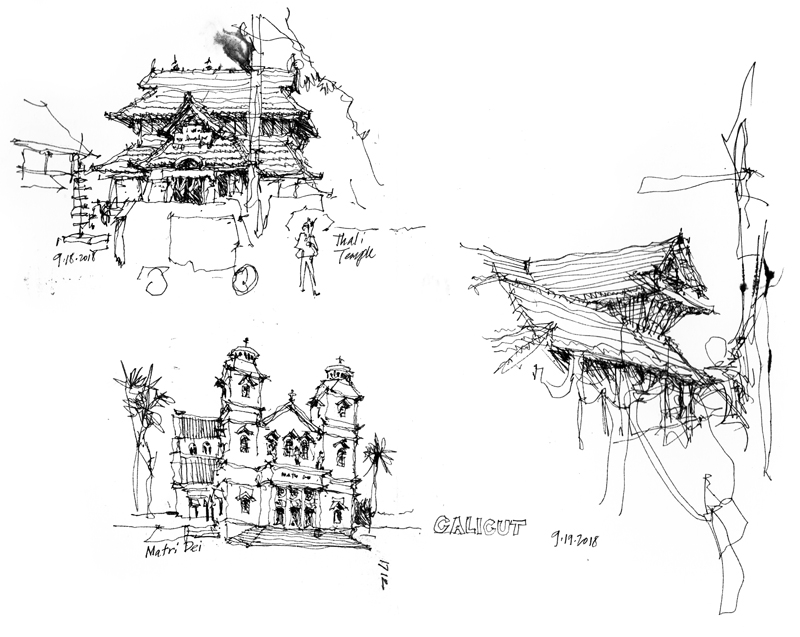Occasionally, I will be reposting items from my Facebook page, which I had used to illustrate my drawing activities from January 2010 to February 2012. This one is from June 2010.
The above quote brings to mind the distinction between the vast richness of our visual perception as we survey a scene and our limited ability to capture that richness in a drawing. So in sketching, rather than attempt to reproduce every detail exactly the way we see it, we should simply try to make what we perceive visible to others. We do this by remembering that all drawing is abstraction, editing what we choose to include in our drawing, and relying upon suggestion rather than replication.
For example, here are a few enlargements of a sketch I did of the Sannenzaka slope in Kyoto. The lines and shapes are barely recognizable as being representative of anything. But in the context of the whole drawing, it is convincing enough to suggest to the mind’s eye a scene that we recognize. The whole is truly greater than the sum of the parts.


